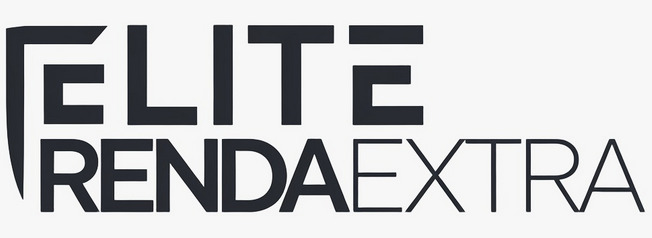Life often presents opportunities or challenges that require financial flexibility. Whether you’re considering a significant home improvement project, consolidating higher-interest debts, or managing unexpected expenses, finding the right financial tool is key. For many people in the United States, a personal loan can offer a structured way to access funds when needed.
Navigating the world of personal loans, especially when looking for amounts between $5,000 and $10,000, can seem complex. With various lenders offering different terms and rates, understanding how to compare options effectively is crucial. This information aims to shed light on the process, helping you grasp the essential factors involved in finding a personal loan that aligns with your financial situation.
Understanding Personal Loans Between $5,000 and $10,000
Securing funds in the range of $5,000 to $10,000 opens doors to addressing medium-sized financial goals or needs. Understanding the fundamentals of these loans is the first step toward making an informed decision.
What Exactly is a Personal Loan?
A personal loan is typically an unsecured loan, meaning it doesn’t require collateral like a house or car. Lenders provide you with a lump sum of money, which you agree to pay back in fixed monthly installments over a predetermined period, known as the loan term. This amount includes the principal (the borrowed amount) plus interest.
Because they are often unsecured, lenders rely heavily on your creditworthiness – including your credit history, income, and debt-to-income ratio – to determine eligibility and the interest rate offered. Loans in the $5,000 to $10,000 bracket are substantial enough to cover significant costs but may come with varying qualification requirements depending on the lender.
Common Uses for Loans in This Range
People seek personal loans for a multitude of reasons. Within the $5,000 to $10,000 range, common uses in the United States include:
- Debt Consolidation: Combining multiple high-interest debts (like credit cards) into a single loan, potentially with a lower interest rate and a more manageable monthly payment.
- Home Improvements: Funding renovations, repairs, or upgrades to your home, such as a kitchen remodel, bathroom update, or new roof.
- Major Purchases: Covering the cost of significant items like appliances, furniture, or even contributing towards a used vehicle purchase.
- Medical Expenses: Paying for medical or dental procedures not fully covered by insurance.
- Moving Costs: Financing expenses associated with relocating, including hiring movers, security deposits, and initial setup costs.
- Emergency Situations: Handling unexpected financial setbacks, like major car repairs or urgent travel needs.
The flexibility of personal loans makes them a versatile tool, but it’s essential to borrow for needs that align with a clear repayment plan.
Key Features to Consider
When evaluating personal loans, several key features stand out:
- Loan Amount: Ensure the lender offers loans within your desired $5,000 to $10,000 range and borrow only what you truly need.
- Interest Rate (APR): The Annual Percentage Rate represents the true cost of borrowing, including interest and certain fees. Comparing APRs is vital.
- Repayment Term: This is the length of time you have to repay the loan, typically ranging from one to seven years. Longer terms mean lower monthly payments but more interest paid overall. Shorter terms mean higher payments but less total interest.
- Fees: Be aware of potential fees, such as origination fees (charged for processing the loan), late payment fees, or prepayment penalties (fees for paying off the loan early, though less common now).
Why Comparing Rates is Crucial
Finding a personal loan isn’t just about getting approved; it’s about securing terms that are favorable for your financial health. Comparing rates and terms from multiple lenders is arguably the most important step in the process.
The Impact of APR (Annual Percentage Rate)
The APR is the most critical number to compare. Even a small difference in APR can significantly impact the total amount you repay over the life of the loan. For example, on a $7,500 loan with a 5-year term:
- An APR of 10% might result in a monthly payment of approximately $159 and total interest paid of around $2,060.
- An APR of 15% could lead to a monthly payment of about $179 and total interest paid of roughly $3,230.
This simple illustration shows how a few percentage points can translate into over a thousand dollars in extra interest costs. Diligent comparison helps minimize the overall expense of borrowing.
Fixed vs. Variable Rates: What’s the Difference?
Personal loans typically come with either fixed or variable interest rates:
- Fixed Rates: The interest rate remains the same for the entire loan term. This provides predictability, as your monthly payments won’t change. Most personal loans offer fixed rates, which is often preferred for budgeting purposes.
- Variable Rates: The interest rate can fluctuate over the loan term based on changes in a benchmark index rate. While variable rates might start lower than fixed rates, they carry the risk that your payments could increase if interest rates rise. These are less common for standard personal loans but do exist.
Understanding which type of rate is being offered is essential when comparing loan options, especially considering the potential impact of variable rates on long-term affordability.
Beyond the Interest Rate: Looking at Fees
While APR incorporates some fees, it’s wise to look closely at the fee structure of any loan offer:
- Origination Fees: Some lenders charge a fee, usually a percentage of the loan amount (e.g., 1% to 8%), deducted from the loan proceeds before you receive the funds. A $10,000 loan with a 5% origination fee means you’d receive $9,500. This fee increases the overall cost, so factor it into your comparison.
- Late Payment Fees: Understand the cost if you miss a payment deadline.
- Prepayment Penalties: Check if the lender charges a fee if you decide to pay off your loan earlier than scheduled. Many reputable lenders, especially online ones, do not have prepayment penalties.
Always read the loan agreement carefully to understand all associated costs before accepting an offer.
Factors Influencing Your Loan Options and Rates
Lenders assess several factors to determine your eligibility for a personal loan between $5,000 and $10,000 and the specific rate they will offer you. Improving these factors can often lead to better loan terms.
Your Credit Score’s Role
Your credit score is one of the most significant factors. It’s a numerical representation of your creditworthiness, based on your borrowing and repayment history. Lenders use it to gauge the risk of lending to you.
- Excellent Credit (e.g., 760+ FICO): Typically qualifies for the lowest interest rates and highest loan amounts.
- Good Credit (e.g., 670-759 FICO): Usually qualifies for competitive rates, though potentially not the absolute lowest.
- Fair Credit (e.g., 580-669 FICO): May still qualify, but likely at higher interest rates. Options might be more limited.
- Poor Credit (e.g., below 580 FICO): Finding an unsecured personal loan in this range can be challenging, and rates will likely be very high if approved. Secured options or co-signers might be necessary.
Knowing your credit score before you start comparing can help you set realistic expectations.
Income and Debt-to-Income Ratio (DTI)
Lenders need assurance that you can afford to repay the loan. They will verify your income and calculate your debt-to-income ratio (DTI). DTI compares your total monthly debt payments (including potential new loan payment) to your gross monthly income.
A lower DTI (generally below 36%-43%, though thresholds vary by lender) indicates you have more disposable income available to handle new debt, improving your chances of approval and potentially securing a better rate. Lenders want to see stable and sufficient income to cover the proposed loan payments comfortably.
Loan Term Length
The repayment term you choose affects both your monthly payment and the total interest paid:
- Shorter Term (e.g., 2-3 years): Results in higher monthly payments but less interest paid over the life of the loan. You become debt-free faster.
- Longer Term (e.g., 5-7 years): Leads to lower, potentially more manageable monthly payments, but you’ll pay significantly more interest over time.
Balancing affordability (monthly payment) with the total cost (interest) is key. Choose a term that fits your budget but minimizes overall interest if possible.
Choosing the Right Lender Type
Different types of institutions offer personal loans, each with potential advantages and disadvantages:
- Banks: Traditional financial institutions. May offer competitive rates, especially for existing customers with good credit. The application process might be more formal.
- Credit Unions: Member-owned non-profits. Often offer lower interest rates and fees than banks, particularly for members. Tend to have more personalized service but may require membership.
- Online Lenders (FinTech): Specialize in online lending. Often feature quick application processes, fast funding, and competitive rates, catering to a wide range of credit profiles. Comparison shopping is straightforward.
Exploring options from each category can broaden your comparison and help you find the best fit.
Navigating the Personal Loan Landscape ($5k – $10k)
Armed with an understanding of personal loans and influencing factors, the next step involves navigating the process of finding and applying for one.
The Application Process: What to Expect
While specifics vary by lender, the general process usually involves these steps:
- Pre-qualification: Many lenders offer a pre-qualification process online. You provide basic financial information, and the lender gives an estimate of the loan amount and rate you *might* qualify for, usually with only a soft credit inquiry (which doesn’t affect your score). This is an excellent tool for comparison shopping.
- Formal Application: Once you choose a lender, you’ll complete a full application, providing detailed personal, employment, and financial information. This typically involves a hard credit inquiry, which can slightly lower your credit score.
- Documentation: You’ll likely need to submit documents to verify your identity (e.g., driver’s license), income (e.g., pay stubs, tax returns), and address (e.g., utility bill).
- Review and Approval: The lender reviews your application and documentation. Approval decisions can range from minutes (often with online lenders) to several days.
- Loan Offer and Acceptance: If approved, you’ll receive a formal loan offer detailing the amount, APR, term, and monthly payment. Review it carefully before accepting.
- Funding: After acceptance, the funds are typically deposited directly into your bank account, often within one to a few business days.
Understanding Pre-qualification vs. Pre-approval
It’s important to distinguish between these terms:
- Pre-qualification: An initial estimate based on self-reported information, usually involving a soft credit pull. It gives you an idea of potential loan offers without impacting your credit score. Great for early-stage comparison.
- Pre-approval: A more formal process often requiring documentation and involving a hard credit inquiry. It represents a conditional commitment from the lender, subject to final verification.
Use pre-qualification widely to compare rates from multiple lenders before committing to a formal application that triggers a hard inquiry.
Tips for Responsible Borrowing
Taking on debt requires careful consideration. Here are some tips for borrowing responsibly:
- Borrow Only What You Need: Resist the temptation to borrow more than necessary for your specific purpose.
- Have a Clear Repayment Plan: Ensure the monthly payments fit comfortably within your budget before accepting the loan.
- Read the Fine Print: Understand all terms, conditions, fees, and penalties associated with the loan.
- Avoid Overextending Yourself: Ensure the new loan payment doesn’t push your DTI ratio too high or strain your finances.
- Consider Alternatives: Explore other options like savings, 0% APR credit card offers (for shorter terms), or borrowing from family if appropriate, before committing to a loan.
Making an Informed Decision
Finding a personal loan between $5,000 and $10,000 involves more than just searching for the lowest advertised rate. It requires understanding your own financial situation, knowing what factors influence loan terms, and diligently comparing offers from various lenders – considering APR, fees, and repayment terms.
By taking the time to research and compare, you can identify a loan that not only meets your immediate financial needs but also aligns with your long-term financial well-being. Remember that the goal is to use the loan as a tool to achieve a specific objective without creating undue financial stress down the road.
Careful consideration and thorough comparison are your best allies in navigating the personal loan market effectively. Exploring the available options thoughtfully will position you to make a choice that serves your financial goals well.


